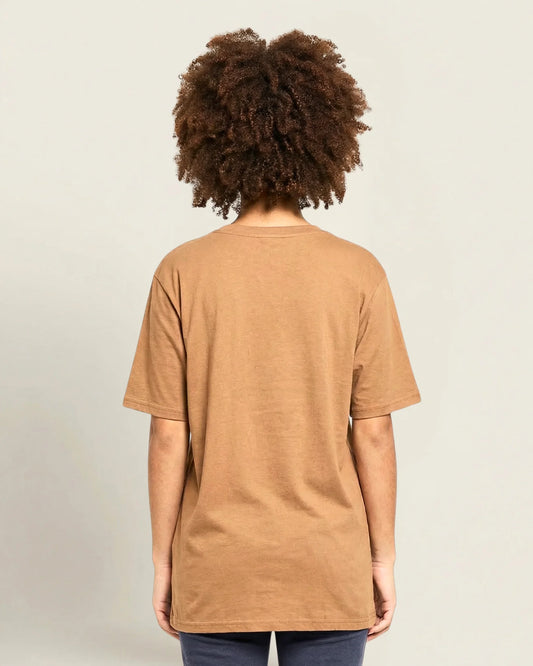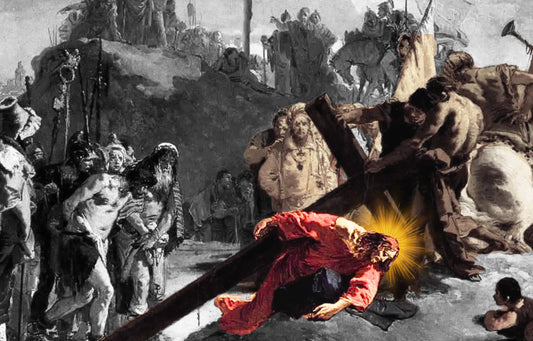Hoodies, a staple in modern fashion, have a rich and varied history dating back to the 1930s. Originally designed as practical workwear for laborers and athletes, hoodies have evolved over the decades to become symbols of rebellion, identity, and style. This article explores the fascinating journey of the hoodie, from its ancient precursors to its future in sustainable and technological innovations.
Quick Overview
- The concept of hooded garments dates back to ancient Greece and medieval Europe.
- Hoodies were first invented in the 1930s, primarily for workers in cold environments.
- Hoodies gained cultural significance in the 1970s through movies like *Rocky* and the rise of hip-hop culture.
- Technological advancements have led to innovations in fabric, design, and customization of hoodies.
- The hoodie continues to be a versatile and globally popular garment, evolving with trends and societal changes.

The Hoodie History Timeline
12th Century
|
The earliest garments with hoods appeared in Medieval Europe. Monks wore hooded tunics called cowls, and outdoor workers used hoods attached to capes for protection against the weather.
1930
|
The modern hoodie was developed by the American company Champion, which added hoods to sweatshirts to keep workers warm in cold New York warehouses. This marked the beginning of the hoodie as a utilitarian garment.
1960s
|
Hoodies became popular in collegiate fashion, with universities printing their logos on them. This helped spread the garment's popularity internationally.
1970's
|
The rise of hip-hop culture in New York City contributed to the hoodie's popularity. The film "Rocky" also played a significant role in making the hoodie iconic, as the character Rocky Balboa wore a hoodie during training scenes.
1990's
|
Hoodies became a commercial success and were incorporated into fashion collections by major brands like Ralph Lauren and Tommy Hilfiger. During this time, the hoodie also became associated with various subcultures, including skateboarding and rave scenes.
2000's
|
The hoodie continued to evolve as a symbol of casual and streetwear fashion. It became a staple in wardrobes across different demographics and was used as a medium for personal expression.
2010's and Beyond
|
The hoodie became a common sight in the tech industry, symbolizing a shift towards more relaxed work attire. It also gained popularity during the COVID-19 pandemic as a comfortable at-home garment.
Who Invented The Hoodie? The Birth In 1930s

The hoodie as we recognize it today can be traced back to the 1930s, when it was first created by Champion. Originally designed as a practical garment for laborers working in cold environments, the hoodie quickly gained popularity due to its functionality and comfort. Champion Products, initially known as the Knickerbocker Knitting Company, was instrumental in the development of the first hooded sweatshirt.
Ancient Precursors to the Modern Hoodie
The concept of hooded garments dates back much further than the 1930s. Ancient Greece saw the use of a hooded cloak known as the 'chlamys,' which provided protection from the elements. This early form of hooded clothing laid the groundwork for future designs.
Hooded Garments in Ancient Greece
The 'chlamys' was a versatile piece of clothing in ancient Greece, often worn by soldiers and travelers. It was a rectangular cloak fastened at the shoulder with a pin, and its hood offered practical protection against the weather.
Medieval Europe and the Monastic Hood

In medieval Europe, hooded garments became more widespread, particularly among monks. The monastic hood, or 'cowl,' was an integral part of a monk's attire, symbolizing modesty and piety. This period also saw the emergence of the 'huik,' a hooded cloak worn by both men and women for warmth and modesty.
The Evolution of Hooded Cloaks
Over the centuries, hooded cloaks evolved in design and usage. By the 12th century, hooded garments were common across various social classes in Europe. These early designs influenced the development of later hooded clothing, including the modern hoodie.
The Hoodie in Popular Culture

Over the years, hoodies have become intertwined with pop culture, appearing in movies, music videos, and iconic moments. In films, hoodies have been worn by characters like Rocky Balboa, epitomizing determination and resilience. In the music world, hoodies have been embraced by artists like Eminem and Kanye West, contributing to their association with rap and hip-hop culture.

The hoodie's rise to mainstream fashion began in the 1980s and 1990s, thanks to the influence of hip-hop culture and streetwear fashion. Artists and musicians started wearing hoodies as part of their stage outfits, projecting a sense of urban coolness. This cultural shift turned the hoodie into a symbol of rebellion and nonconformity, creating a lasting impact on its popularity in street fashion.

Few pieces of clothing have garnered as much symbolism and cultural significance as the hoodie, for both positive and negative reasons. Despite originating from humble practical origins, the hoodie has become domesticated and undergone a transformation as society has become increasingly trend-centric and casual. As a result, the hoodie has become a ubiquitous piece of attire, making it difficult to distinguish who the important customers are according to Madison Avenue retailers.

The hoodie’s cultural significance extends beyond music and movies. It has become a symbol of solidarity and activism. During protests and movements, hoodies have been used to express support for causes and unite individuals who share a common goal. The "hoodie movement" gained momentum after the tragic shooting of Trayvon Martin in 2012, highlighting the hoodie as a symbol of racial profiling and social injustice.
Technological Innovations in Hoodie Design
Advancements in Fabric and Material
Hoodies have come a long way from their simple pullover origins. Modern hoodies now feature advanced fabrics that offer better comfort, durability, and functionality. Brands have experimented with various materials, including moisture-wicking fabrics, thermal insulation, and even eco-friendly options. These innovations have made hoodies suitable for a wide range of activities and weather conditions.
Introduction of Zippered Hoodies
The introduction of zippered hoodies marked a significant shift in hoodie design. This innovation provided wearers with more versatility and ease of use. Zippered hoodies can be worn open or closed, making them a popular choice for layering. This design also allowed for more creative patterns and styles, further cementing the hoodie's place in fashion.
Customization and Personalization Trends
The rise of print-on-demand technology has revolutionized hoodie customization. Companies like Printful have made it easy to create custom hoodies that reflect individual styles. This trend has led to a surge in personalized hoodies, from unique prints to custom embroidery. The ability to personalize hoodies has made them a favorite for both casual wear and special occasions.
The evolution of hoodie design showcases the blend of functionality and fashion, making it a staple in modern wardrobes.
The Hoodie as a Symbol of Rebellion and Identity
Counterculture Movements
The hoodie has long been associated with various counterculture movements. From the punk rockers of the 1970s to the hip-hop artists of the 1980s, the hoodie became a staple in expressing non-conformity and individuality. It was more than just a piece of clothing; it was a statement against the mainstream.
Hoodies in Protest and Activism
The hoodie's cultural significance extends beyond music and movies. It has become a symbol of solidarity and activism. During protests and movements, hoodies have been used to express support for causes and unite individuals who share a common goal. The "hoodie movement" gained momentum after the tragic shooting of Trayvon Martin in 2012, highlighting the hoodie as a symbol of racial profiling and social injustice.
The Controversy and Stereotypes
Despite its widespread popularity, the hoodie has not been without controversy. It has often been stereotyped as a garment associated with delinquency and crime. This negative perception has led to instances of discrimination and profiling, making the hoodie a powerful symbol in discussions about social justice and equality.
In a way, the hoodie became a symbol against discrimination. The hoodie has held on to more profound meaning in US social life. The 2012 shooting of Trayvon Martin brought this issue to the forefront, making the hoodie a poignant emblem of the fight against racial injustice.
The Globalization of the Hoodie

The hoodie has transcended its humble beginnings to become a global fashion staple. Its appeal lies in its versatility and cultural significance, making it a favorite across various demographics and regions. The journey of the hoodie from a practical garment to a symbol of identity and rebellion is a testament to its widespread influence.
Adoption Across Different Cultures
The hoodie has been embraced by diverse cultures around the world. From the streets of New York to the markets of Tokyo, it has become a universal symbol of casual wear. This widespread adoption is partly due to its association with hip-hop culture, which has a global following. The hoodie’s promise of anonymity and mystery resonates with people from different backgrounds, making it a popular choice for those seeking to express their individuality.
International Brands and Designers
Major fashion houses like Ralph Lauren and Tommy Hilfiger have incorporated hoodies into their collections, elevating the garment to high fashion status. This shift has helped to remove some of the negative connotations associated with hoodies, transforming them into a symbol of modern style and sophistication. The international success of the hoodie demonstrates its ability to adapt and thrive in various fashion landscapes.
The Future of the Hoodie
The future of the hoodie looks promising as it continues to evolve with advancements in technology and fashion trends. Sustainable practices and innovative designs will likely play a significant role in shaping its future. The hoodie is expected to remain a popular and influential garment, adapting to the changing needs and preferences of consumers.
Sustainability and Eco-Friendly Materials
As environmental concerns grow, many brands are focusing on sustainable practices and eco-friendly materials for hoodie production. Organic cotton, recycled polyester, and low-impact dyes are becoming more common in hoodie designs. These efforts reflect a broader trend towards sustainability in fashion and indicate a growing awareness of the garment's environmental impact.
Technological Integration
The integration of technology into hoodie design is an exciting development. Innovations such as heated fabrics, built-in LED lights, and smart textiles are making their way into hoodie designs. These technological advancements offer enhanced functionality and convenience, pushing the boundaries of what a hoodie can be.
The hoodie’s journey from a practical workwear garment to a global fashion icon is a testament to its adaptability and enduring appeal. Its evolution reflects broader changes in fashion, culture, and technology, making it a fascinating subject of study and a beloved piece of clothing.














